Research Projects
Below you will find a list of current major research projects and collaborations. For a list of current and past digital projects/outputs, see this page.
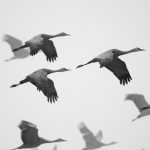
Wild Lives
Grounded in ethnographic, historical, and philosophical literatures and approaches, this project is exploring the social and ethical dimensions of a growing field of biological research that seeks to achieve conservation outcomes by altering animal behaviours in domains that range from predation and migration to reproduction. I am asking how scientists, diverse animals, and local human communities are adaptively learning to relate to one another, to make sense of one another, and hopefully to survive with one another.
PIs: Thom van Dooren
Seed Funding: The University of Sydney (SOAR Prize 2022-23); Humboldt Research Award

Afterlives: More-than-human burial stories
Recent decades have seen a host of new approaches to taking care of the bodies of the dead: from aquamation (dissolution in water) to promession (freeze drying and shattering), and even cryogenic preservation. Meanwhile, a variety of older approaches are being reinvented, from green cremations and exposure (‘sky burial’), to eco-burials—perhaps even with a ‘mushroom burial suit’. This project attends to these diverse ‘deathscapes’, exploring these and other funerary practices with a particular focus on their always more-than-human possibilities. Of central interest in this context is the host of environmental consequences of particular deathly practices: from carbon emissions and the circulations of various toxins and pathogens, to associated modes of land use and habitat disruption. In taking up these themes, this project pays particular attention to the diverse nonhumans involved and caught up here, from scavengers and detritovores to the creatures making their homes in cemeteries. At its core, the project explores shifting scientific understandings of the ways in which bodies “come apart” after death, and how it is that they (and their toxic residues) travel through soil, water, atmospheres, and ecosystems. These are understandings taking shape at the intersection between numerous fields of research, from anatomy to atmospheric science, ecology to the careful forensic studies of decomposition conducted at ‘body farms’ around the world. Alongside these material reconfigurations, this project also attends to the understandings, values, and imaginaries — of human life, of other species, of broader ecologies — that animate and emerge out of funerary practices: from efforts to thaw and resurrect (some) human beings, to a desire to reposition our bodies as a source of nourishment for others. With a particular focus on the period from WW2, the project explores how environmental movements and associated ecological sciences have interacted with an emerging funerary industry as well as ongoing efforts to challenge dominant practices. Ultimately, this project is grounded in the understanding that these questions matter for a host of reasons: in more and less obvious and consequential ways, death practices reshape the web of life. Of course, taking the afterlives of human bodies seriously matters for our ability to act responsibility in this difficult space, both individually and collectively. But this project aims also to explore how modes of relating to and caring for the dead—of cultivating an ‘arts of dying’ grounded in the insights and challenges of our current time—might open up an important opportunity to rethink and remake possibilities for human life on a wounded planet.
PIs: Thom van Dooren
Funding: Humboldt Research Award

Multispecies Landscapes
What does it mean to approach landscapes as historically layered, ongoing, more-than-human configurations? Recent work in anthropology, STS, and the environmental humanities has emphasised how the diverse agencies of humans and nonhumans generate worlds. This special issue brings those conversations into engagement with the multispecies dimensions of land- and waterscapes. While landscape has long been a vibrant area of humanistic inquiry, Anthropocene discourse is compelling anthropologists to reckon with the biophysical violence of human infrastructures, especially those tied to capitalist and colonial worldings. Accordingly, our humanist understanding of landscape––e.g., as a theater of power, sedimentation of history, and space of cultural practice––have begun to merge with natural scientists’ conceptualizations of landscape––e.g., as a mosaic of ecological patches, watershed, and critical zone. The modes of landscape ethnography deployed by the assembled authors reveal new ways to study multispecies geographies and interpret humans’ embeddedness in the earth’s rapidly changing surface. These papers and the methods they deploy work across (1) heterogeneous temporal and spatial scales; (2) biotic and abiotic elements; (3) atmospheric, hydrologic, and geologic processes while always centering the imbrication of culture, power, and history. Of particular interest is how an attention to landscapes creates new possibilities for storying the contemporary, in all its violence and unexpected emergence.
PIs: Pierre du Plessis, Zachary Caple, Thom van Dooren, Ursula Münster, Sophie Chao, and Sara Asu-Schroer.
Other contributors: Anna Tsing, Nils Bubandt, Andrew Mathews, Heather Swanson, and Jerry Zee, Knut G Nustad, Duncan Brown, Nikiwe Solomon, Lesley Green, Emily O’Gorman, Grace Karskens, Rachel Cypher, Suma TR, Britt Kramvig, Tarja Salmela, and Shiho Satsuka.
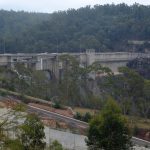
Narrative Ecologies of Warragamba Dam
This interdisciplinary environmental humanities project focuses on the proposed raising of the Warragamba Dam wall to explore the role of narrative in analysing and responding to socio-environmental controversies. It aims to develop new resources for enhancing community understanding and involvement in these complex issues, utilising narrative to enable responses that are creative, inclusive, and just.
PIs: Thom van Dooren, Emily O’Gorman, Stephen Muecke, Grace Karskens, Matthew Kearnes, Natalie Osborne, Peter Minter
Funding: Australian Research Council (Discovery Project 2022-2025)
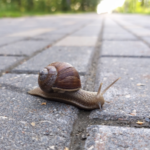
Living Together: New Approaches to Multispecies Conflict and Coexistence
Building on the methods and concepts of the emerging environmental humanities, this project will produce a new conceptual vocabulary for a world in which multispecies conflict and coexistence is increasingly important. It brings critical and generative rereadings of classical political thought and contemporary biopolitical and cosmopolitical approaches into dialogue with a set of empirical case studies emerging from novel encounters between humans and other animals. This project will expand Australia’s knowledge base and research capacity in the interdisciplinary environmental humanities and stake out new approaches to the question of living together in a changing environment.
PIs: Robert Briggs, Matthew Chrulew, Dinesh Wadiwel, Thom van Dooren, Jacqueline Dalziell, Dominique Lestel.
Funding: Australian Research Council (Discovery Project 2024-2027)
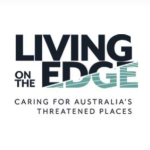
Living on the Edge: Caring for Australia’s Threatened Places
This project explores eight ecological communities from across the continent. The project considers what these places are like, why they matter and how we can protect and regenerate them. Each is a vibrant land and waterscape, home to unique plants and animals. Each is threatened by habitat loss, invasive species, resource extraction, pollution and climate change. The project brings together cultural researchers, writers, curators, traditional custodians and artists, as well as policy-makers, scientists and community conservationists, to share knowledge and explore ideas about how best to care for these threatened places. The multi-year project will produce an online exhibition, events, creative commissions and education resources.
PIs: Kirsten Wehner, Thom van Dooren, and Cameron Muir
Funding and Partners: Sydney Environment Institute, National Museum of Australia, James Fairfax Foundation.
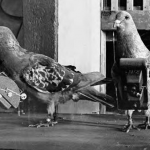
The Social Animals Collaboratory
A collaboration focused on the histories and futures of the social as an inherently multispecies achievement. At present we are working towards a series of publications and an exhibition at the Chau Chak Wing Museum (in collaboration with Zoë Sadokierski and Andrew Burrell).
PIs: Julia Kindt and Thom van Dooren
Funding: Australian Research Council (Future Fellowship 2017-2022) and The University of Sydney